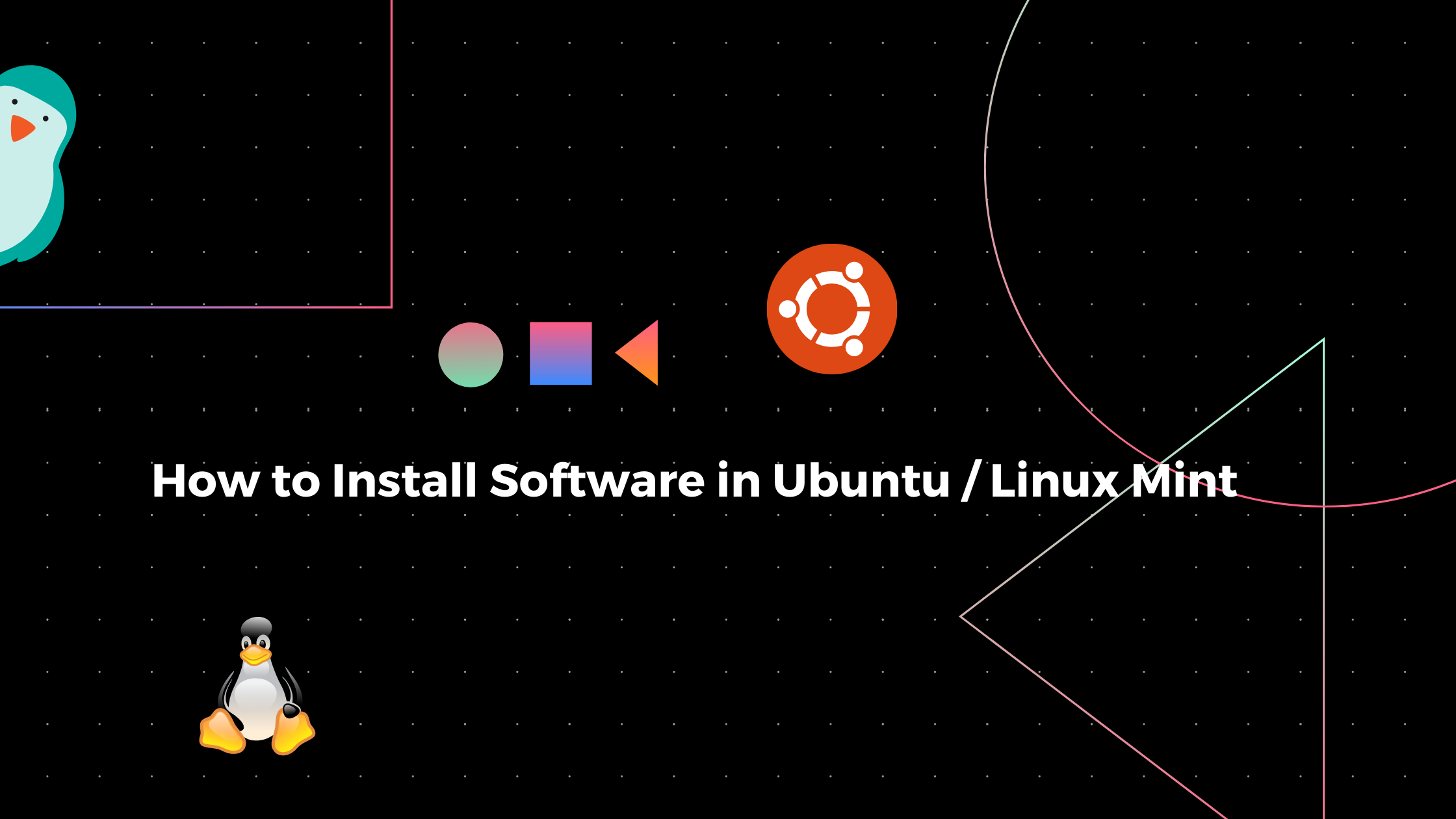In this tutorial, we are going to discuss all possible ways to install softwares on Ubuntu and Linux mint.
Linux is an awesome operating system which gives you full control over your operating system and allows you to customize it to meet your needs.
There are tons of ways to install a software on Linux, but in this tutorial we are going to talk about two specific versions of Linux that are Ubuntu and Linux mint.
You can use these methods on other Linux distributions as well, especially those which are based on Ubuntu or Debian.
Ubuntu comes pre-packed with a lot of methods to install Softwares on it, from installing from the Software Manager to compiling the source code everything is possible.
I will now get straight to the point of installing Softwares on Linux mint/ Ubuntu. I have divided this entire article in multiple parts according to the installation method. You can follow the one that suites you most.
Install softwares on Ubuntu / Linux mint from the Software Manager
Almost all linux distributions comes with a pre-installed official software manager. The name of the software manager can vary depending on the linux version that you are using.
In Ubuntu and Linux mint, the software manager contains thousands of packages. These can be installed with just one click.
All packages in the software manager are tested before they are published in the software manager to check if they are compatible with the latest release of the distribution.
The maintainers can not test this much softwares as soon as the new version is released (but they are trying their best to).
Hence you will found outdated packages in the software manager, however these packages are stable and I ensure you that ninety-nine percent of packages from the software manager will run on your system without trouble.
Also, as these packages are stable, tested and can be installed with one click, Software manager is the best way to install softwares on any distro. This is the reason why I have listed Software manager on top.

You can find the software manager in the menu. Click to open it. Instead of searching it under categories, directly search for it in the search bar.
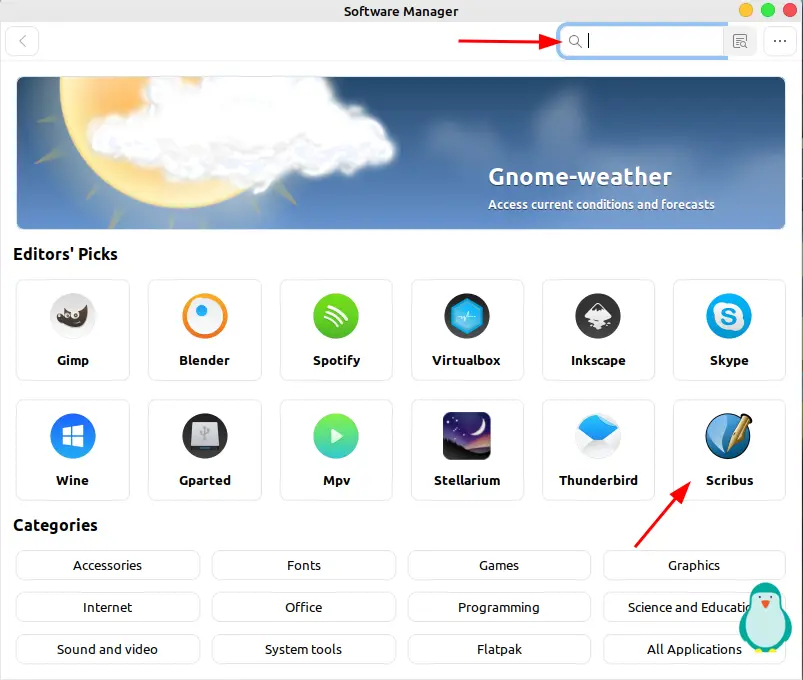
You can now pick a software for installation or you can search for your desired software in the search bar at the top right corner of the software manager.
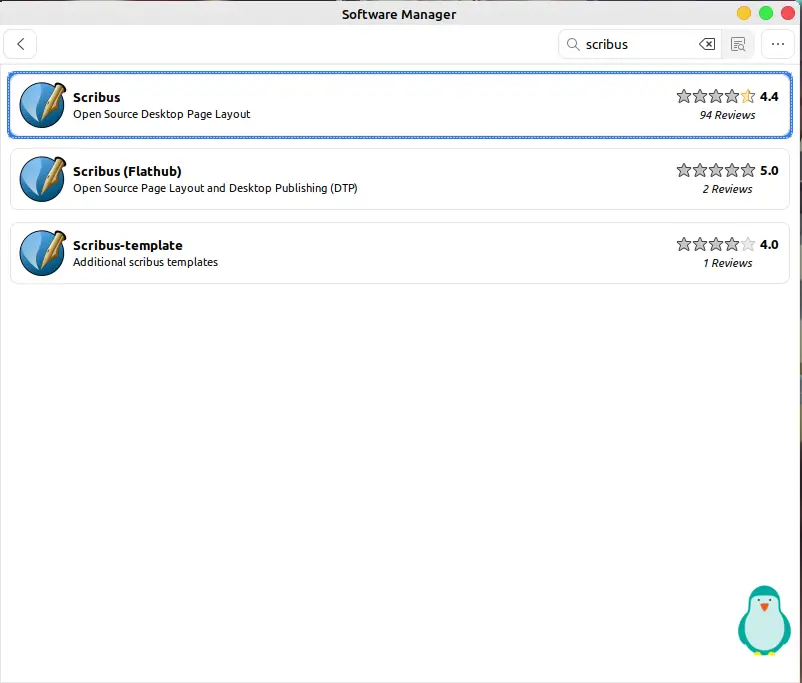
You can now see there are two versions available for the same software. One is the flatpak version, I will discuss flatpak later in this article.
Right now choose the one without flatpak and click to see its additional information.
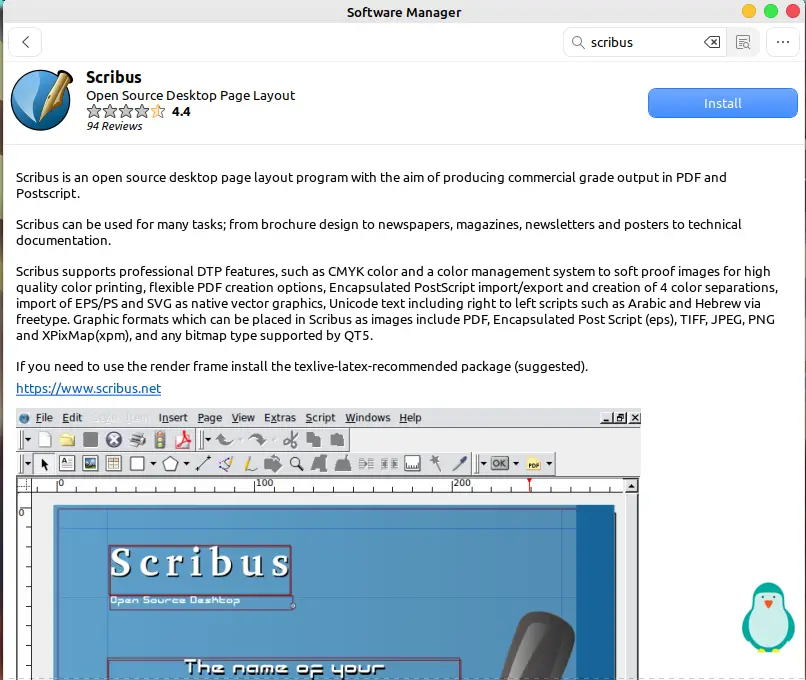
On this page you can see screenshots of the program that you can install. All details and link to the official website are given at the top.
You can find more info related to your required software ( ratings comments, etc.) at bottom. The download size may vary depending upon the dependencies your system has already satisfied.
Click Install to start installing your software. If some dependencies are missing then it will automatically download them for you.
Installing using APT
The other way to install programs in Ubuntu is by using APT and terminal. Apt is same as the software manager, it is the terminal version of the software manager.
You can install, uninstall, reinstall, update and completely remove a package using Apt from terminal.
To install a program using Apt, you need to enter the following command:
sudo apt-get install program
Here, program should be replaced by the name of the program you want to install. Using sudo is not necessary for each and every package.
You must use “sudo” with the programs that need root privileges in order to function.
A shorthand version of same is available on linux mint as:
sudo apt install program
Here is an example of a sample program, to install php on your system you only need to enter this command:
sudo apt-get install php
If a program is already installed it will show you a message that the same program is installed already.
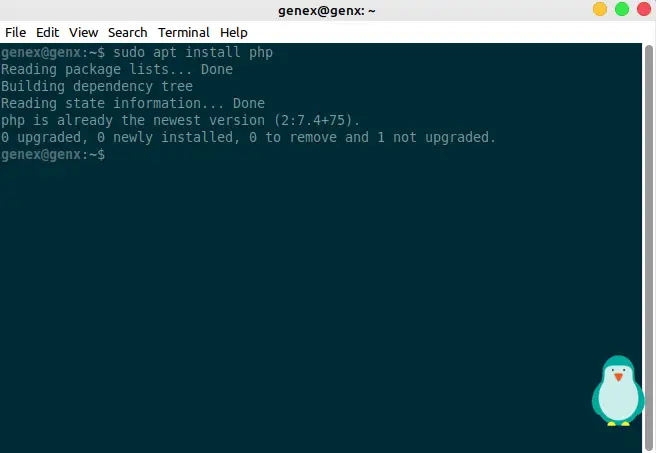
Handle broken packages using apt
If your data ran out or due to some reason, the installation did not finish as expected or is having some other issue, you can fix broken installation using apt directly from the terminal.
To fix broken packages using apt enter the following command :
sudo apt-get install --fix-broken
This will fix all broken installations and dependencies. ALl the missing dependencies will be installed automatically.
Update softwares using Apt
You can update all softwares that you have installed from the software manager or Apt by using Apt itself.
Alternatively, you can use the Update Manager to update packages. TO update installed softwares using apt enter the following command in terminal:
sudo apt upgrade
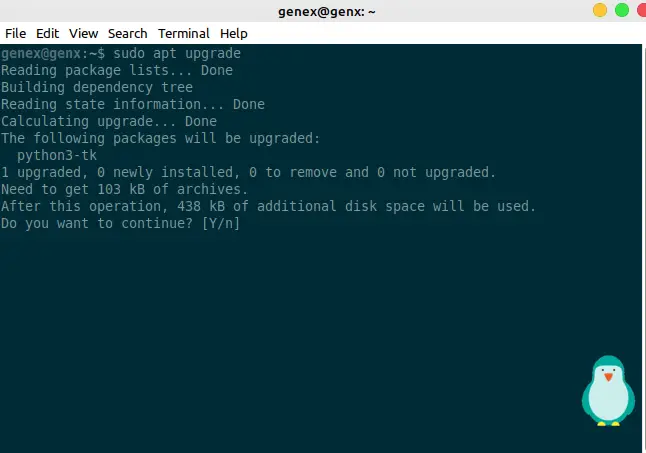
Install packages using PPA
PPA stands for Personal Package Archive. When you add a PPA to your Ubuntu system, you’re adding another software repository for your package manager to pull from.
You will get updates from PPA repository directly in your update manager. A PPA can be added by going to software sources and adding from there in Linux mint.
You can also install them from the terminal. Here is an example of installing GIMP from a PPA repository:
sudo add-apt-repository ppa:ubuntuhandbook1/gimp sudo apt update sudo apt install gimp gimp-gmic
Visit launchpad to see all PPAs, to know more about PPA see this.
To add PPA on Linux mint without terminal follow this:
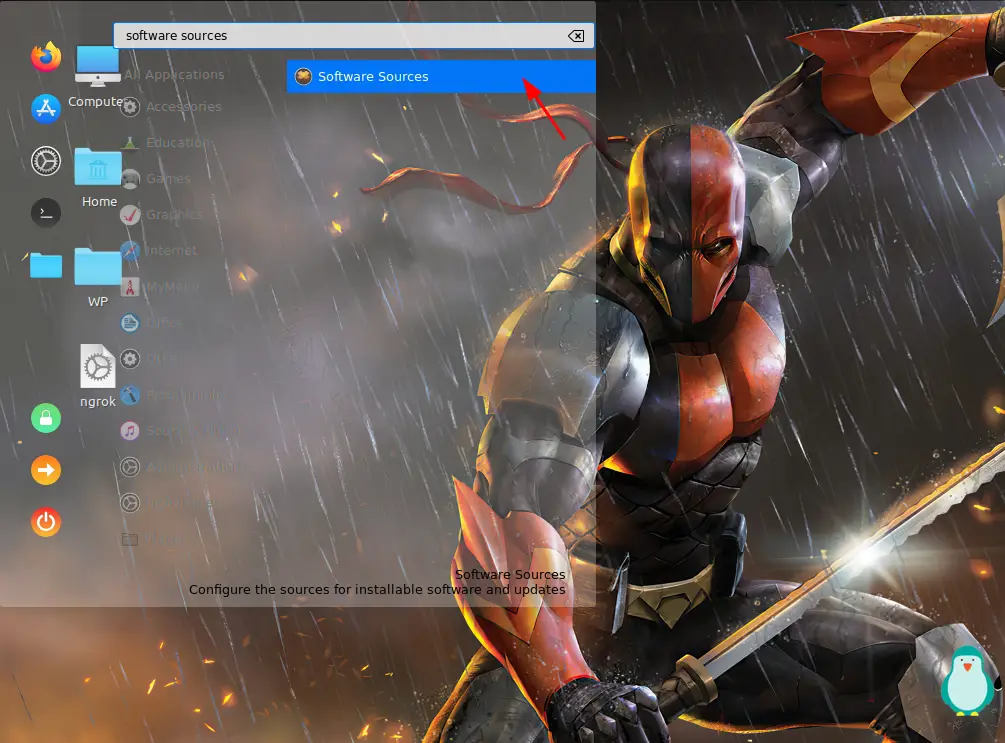
Search for software sources in the menu and open it. You will need to enter your system password in order to prove your authentication.
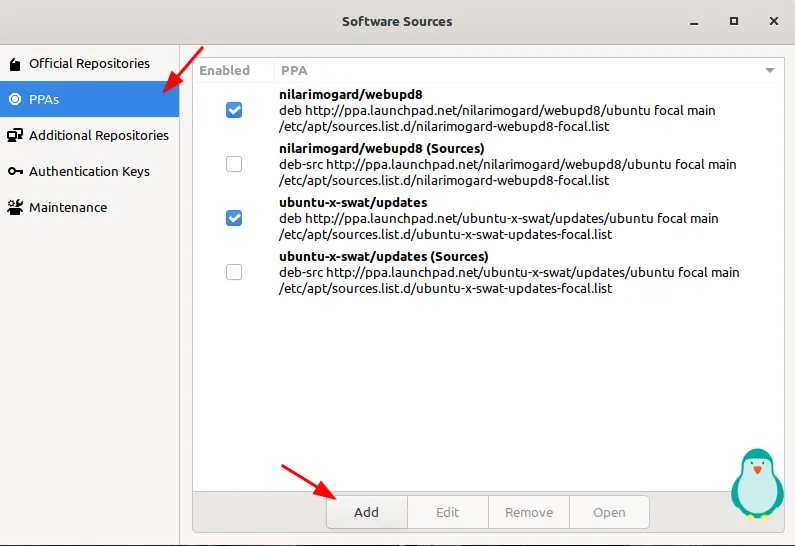
From “Software sources” you can add / remove new PPAs. You can also select the official repository that you want to use for receiving system updates.
Choose the one that is closer to your location.
Install a DEB file
This is probably the second best method to install a file on debian based operating systems like Linux mint and Ubuntu.
Deb files are archives containing all necessary files for a software. Most of the Linux softwares are packed as a deb file.
To install a deb file, you can use a terminal or you can also install it from GUI using gdebi package installer. This comes pre-installed with Ubuntu and Linux mint.
To install a .deb file use the command below:
sudo dpkg -i ./filename.deb
For the above command to work, you have to be in the same directory your file is stored in.
To install multiple deb files at the same time, put them all in the same folder and execute this command in terminal:
sudo dpkg -i *.debInstall Deb file visually using GDebi installer
The other way is to install a deb file using gdebi package installer which comes installed with Linux mint and Ubuntu. You can use it to install deb files on your system.

Download the deb version of the software that you wish to install, and open it by right clicking and selecting “Open with GDebi Package Installer”.

You can see info related to package on this menu. Package version, package name, size and info, etc. To install the package click on the button that says “Install Package“.
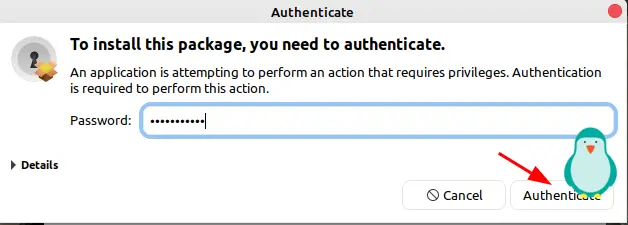
You will need to give GDebi administrative permissions in order to install any package. Do so by filling in your password and click Authenticate.
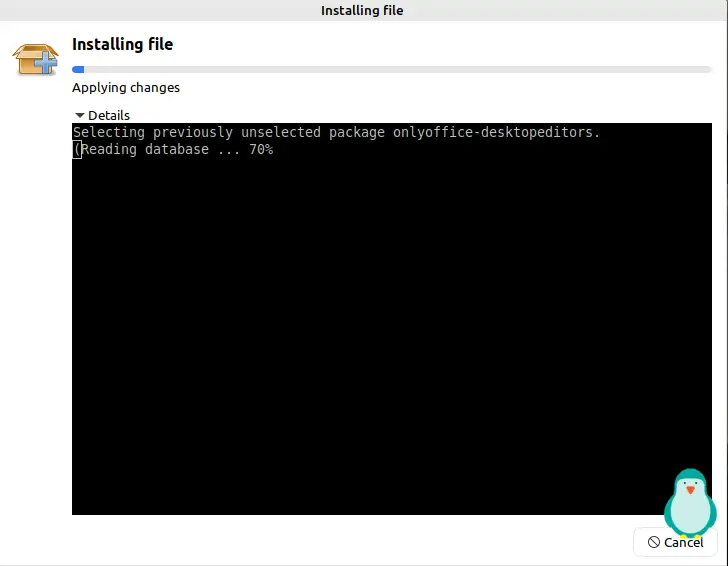
The installation process will begin you can see all logs by clicking on the Details. The time of installation may vary depending on the package you are installing.
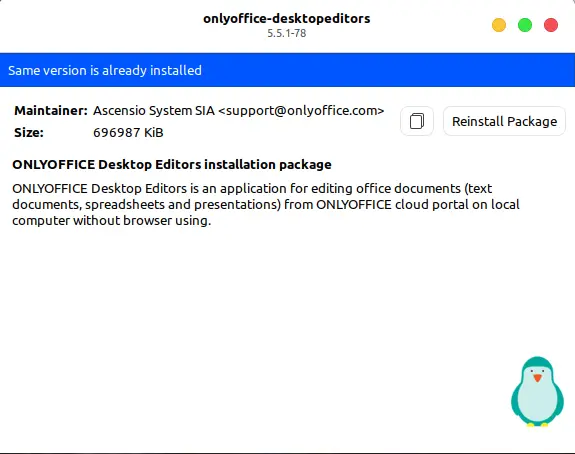
Once the installation is finished you can search for the software that you installed in the menu.
Note: You will not receive automatic updates for packages installed from a deb file.
Install from Flathub
Flathub apps can be installed on any linux distribution using flatpak. Flatpak is a utility for software deployment and package management for Linux
Flathub is a collection of apps that can be installed via flatpak, you can install flatpak applications from the terminal or from the Software manager in Linux mint.
Note: I may warn you that flatpak apps are twice in size as compared to normal deb or other applications. So I try to avoid flatpak as much as possible, this is the reason I didn’t mention this method earlier.
Flatpak comes installed with Linux mint versions 18.0+ so you do not need to install it manually. To install Flatpak on Ubuntu use the following commands:
Install Flatpak on Ubuntu
To install Flatpak on Ubuntu 18.10 (Cosmic Cuttlefish) or later, simply run:
sudo apt install flatpakWith older Ubuntu versions, the official Flatpak PPA is the recommended way to install Flatpak. To install it, run the following in a terminal:
sudo add-apt-repository ppa:alexlarsson/flatpak
sudo apt update
sudo apt install flatpakThe Flatpak plugin for the Software app makes it possible to install apps without needing the command line. To install, run:
sudo apt install gnome-software-plugin-flatpakFlathub is the best place to get Flatpak apps. To enable it, run:
flatpak remote-add --if-not-exists flathub https://flathub.org/repo/flathub.flatpakrepoNow restart your system, this will set-up flatpak on your system.
Install apps with Flatpak
Now go to Flathub, and choose the softwre taht you want to install and enter the commands given by the website at bottom.
For example to install GIMP over flatpak I need to enter the following commands in my terminal:
flatpak install flathub org.gimp.GIMP
I can run the app from menu or:
flatpak run org.gimp.GIMP
Install flatpak from software manager in Linux mint
As I said earlier Flatpak comes installed with Linux mint and you can install flatpak apps directly from the software manager without using the terminal.

You can search for the app that you want to install in the search bar and see if the flatpak version is available.
There is also a separate category for flatpak apps, click on it to browse all flatpak software available in software manager.
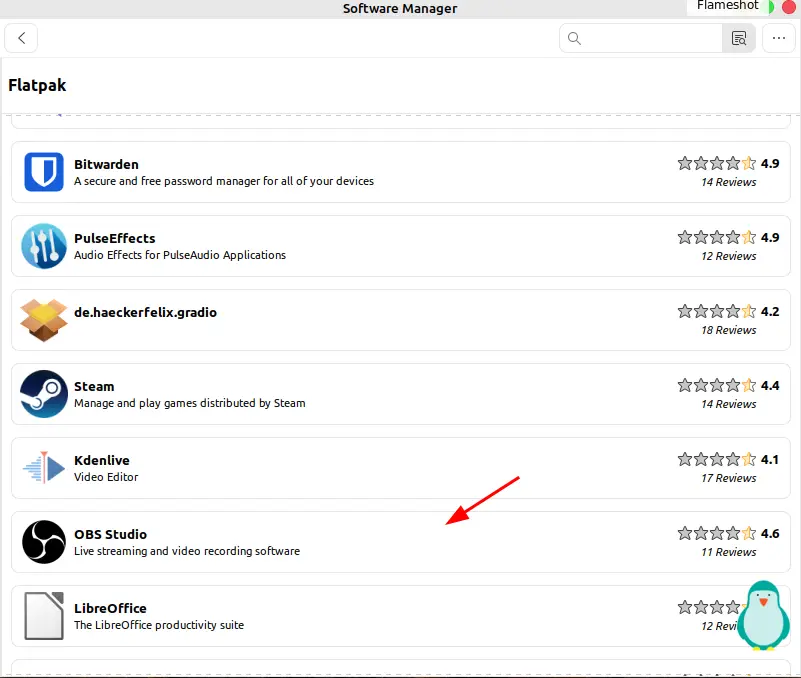
Now click on the software that you wish to install or want to check the info about.
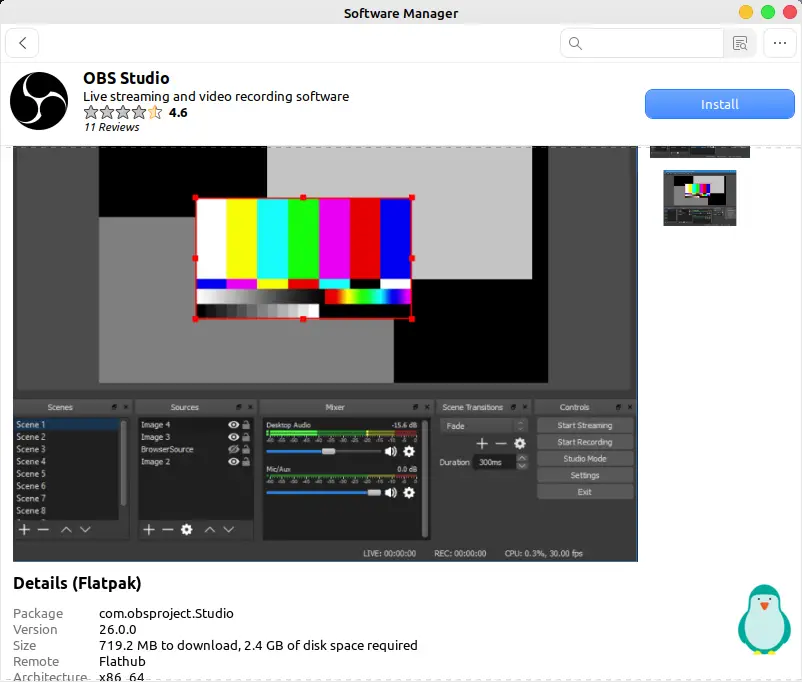
You can install the software by clicking on Install version, there is a very good chance that flatpak software in the software manager would be the latest one.
Also do note the size of the package though, it says 719 MB as of today. However, OBS without flatpak is less than 200 MB big.
Install from a tarball
A tarball is usually the compressed source code of your program, which you need to compile first in order to be able to use it (sometimes it is instead an archive with the already compiled source code).
These can be trickier to install, but it becomes easier after you have done it a few times.
The first thing you need to do is to navigate to the location of the tarball, double-click it, and extract its contents.
Now that the tarball is unpacked you need to go through the contents until you find a file that is called “INSTALL” (alternatively you may need to check the “README” or even the program’s website).
In this file you should find directions on how to install your particular package.
It should also tell you what the dependencies are. First check to see if you have the dependencies installed. If you are missing any check the Software Manager to see if they are there and of the correct versions.
If so install them, if not you have another .deb or tarball to download. If you have them all you will now want to continue reading through the file until you find the directions on how to install.
The usual way is to browse to the extracted directory and select File > Open in Terminal, and there run:
./configuremakesudo make install
Install Software from Steam
You can install proprietary software and games from Steam. You can download steam from its official website it is also available in the software manager.
Also remember, most of the software on Steam are paid and not open-source and may or may not support Linux.
I have written a full tutorial on how to install steam you can check it out here.
Install Windows software using Wine
You can also install windows software in Linux by using a windows to Linux compatibility layer called Wine.
Although all windows software wont work over Wine in Linux, however a lot of them still works. Wine runs Windows software like if they are native without risk of viruses.
Here is a list of software that are tested to work with wine.
I have also written a full tutorial on how to install steam you can check it out here.
Final words
That is it for this article, comment down your opinions regarding this article and Linux in the comments section below. This motivates us to write.
